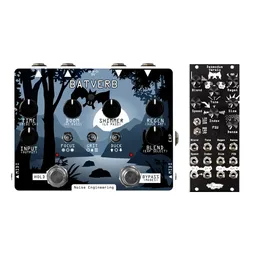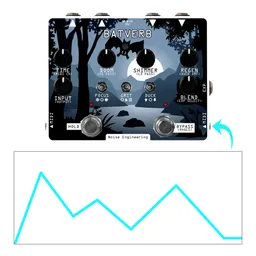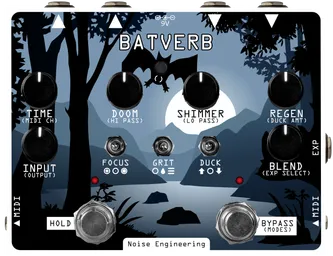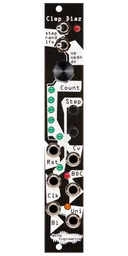We’ve chatted about integrating Batverb with MIDI using CCs and Program Change messages, and about using it as a stereo FX processor with a modular setup. Today, we’ll be integrating even more gear by exploring how the Expression input on Batverb can be routed to suit your needs best, and patching it up with external modulators.
Changing the mapping
Batverb’s Expression input can be mapped to any parameter on the pedal, including secondary parameters. This adds a whole extra layer of performability and flexibility, since parameters can be modulated with an expression pedal, or automatically with modulation.
By default, the Expression input is routed to the Regen parameter. We found this to be the routing that we used the most, as it’s a great performance control for making dramatic changes to the size and decay of the reverb tail.
I really enjoy modulating the Time parameter. It creates big swells and fun delay artifacts that bring the Batverb to the foreground of my sound. We spoke to one user who is a fan of modulating the Blend parameter. With so many options, though, it’s great to explore a few different routings and see what suits your patch or performance style.
To change the routing, hold down the bat button at the top of the pedal, and turn the Blend parameter. The LEDs over the footswitches will change color to indicate the selected routing – you can find the routing table in the Interface section of the user manual. To select Time, I’ll rotate Blend until I see the LEDs turn green.

Plugging it in
Now that we have our Expression routing selected, we need something to modulate the parameter with.
If you’re using the Batverb on a pedal board, an expression pedal is a great choice for on-the-fly modulation. Plug in any standard expression pedal via the ¼” jack, and you’re good to go. The position of the parameter will set the minimum (heel) setting, so if you want to sweep the full range of a parameter, set it fully counterclockwise.
If you want to use an external modulator, like a Eurorack LFO, you’ll just need an adapter. Plug a ¼” to ⅛” adapter into the expression jack and use a normal Eurorack patch cable to connect between your modular and the pedal. You can also use ¼” to ⅛” cable and skip the adapter plug completely.
Signal conditioning
Batverb’s Expression input has a range of 0V to +5V. CV signals outside of this range won’t hurt the pedal, but they will be clipped. A few of the envelope generators in my system have a peak of +8V, so to hear the curve properly, I like to run the output through an attenuator before it goes to the Batverb.
If you’re using a bipolar LFO, you may want to attenuate the signal then offset it so it’s fully in the positive range. You can read more about CV conditioning to get the best performance out of your modulators in this blog post.
LFOs, envelopes, and sequencing
Along with the standard modulators like LFOs and envelopes, using Batverb with modular opens up a world of possibilities for unusual modulation sources. One of our favorite techniques is to use gate signals as modulation signals: route Expression to Blend, then patch a gate signal to the Expression input for glitchy atmospheres that jump in and out in time with a sequence.
Or, patch in a stepped CV sequence and modulate Regen for precisely controlled swells. Sequencers like Mimetic Digitalis, advanced by a slow clock, are a great way to create arrangements and change space to emphasize different parts of a patch.
And with so many unique modulators in Eurorack – fluctuating random sources like Clep Diaz, envelope followers, and so many more – patching with Batverb opens up so many fun possibilities.









